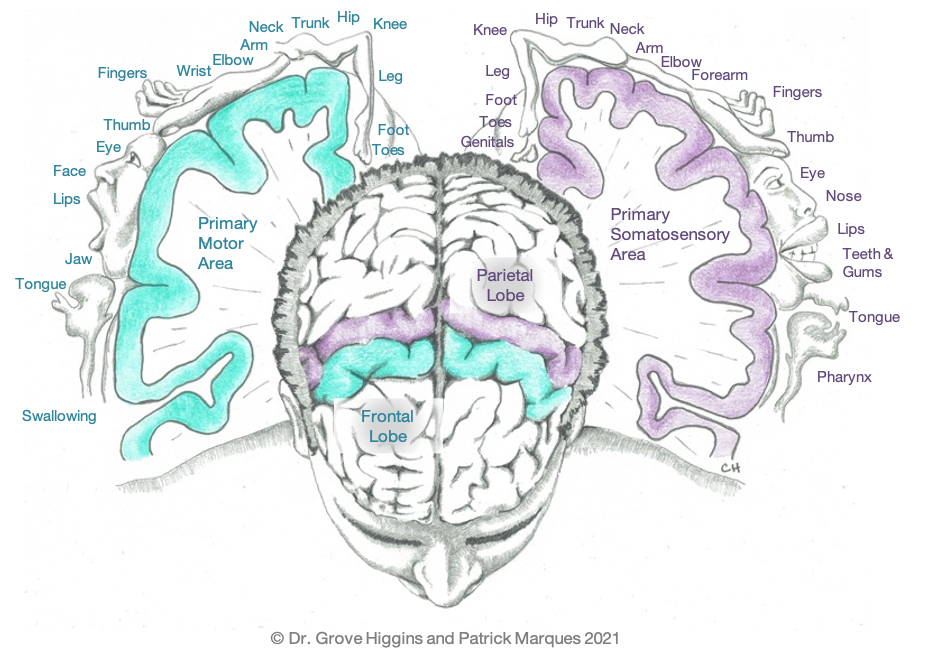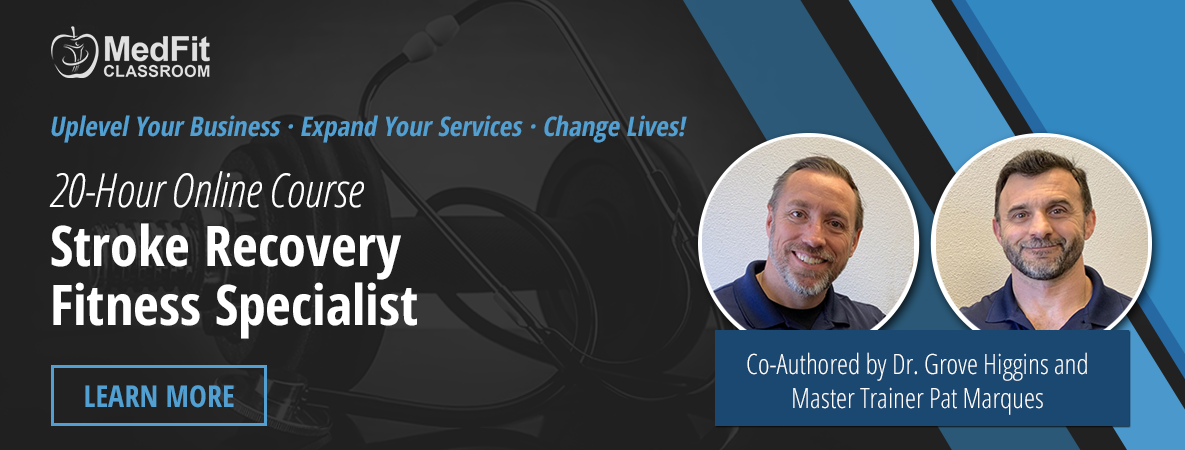In our previous article, we showed you this picture to help understand neuroplasticity and how neurons that wire together, fire together. In this blog we’ll use the same picture to understand how sensory input to the brain affects motor output.
The sensory area (purple) is on the front “slice” of the parietal lobe. The neurons here will be activated by sensory input such as touch, vibration, threat, pressure, temperature and joint position. Lying just in front of the sensory area is the motor area (blue), which is the back “slice” of the frontal lobe. The neurons here are activated through volitional movement.

In both the sensory and motor areas of the brain, you can see in the illustration that specific areas are dedicated to specific body parts. And those areas are represented in the same areas for sensory and motor (e.g., where the hand is located in the sensory area is in the same place in motor area along the “slice”).
Why sensory input matters for stroke survivors
The bottom line is that for you to move an area well, your brain must be able feel, or “sense”, the area well. This is why issues like peripheral neuropathy in the feet so greatly affect the ability to balance and walk. Having good sensory input from an area of the body is a prerequisite for good motor control when we try to move an area.
One of the most prominent dysfunctions after stroke is a reduced ability to move one side of the body. This can occur at many different levels, from total paralysis to reduced coordination of fine motor skills. Common examples include limb spasticity, usually in flexion (e.g., a clenched fist held close into the chest), or what is termed “drop foot”, an inability to dorsiflex (lift) the foot, which severely interferes with a safe, functional gait pattern. This happens because the stroke damaged areas in the motor cortex associated with the affected body part.
The good news is that by increased sensory input to the affected area, we can begin to improve motor output. You have likely seen this already if you have ever used things like percussion guns or kinesiology tape. The many new “toys” we see in the fitness industry these days are simply sensory input devices, providing the sensory area with more and novel input, which then allows the motor area to “fire” better and provide better movement (i.e., improved range of motion, more strength, etc.).
A 2017 study found that “kinesio tape application to the tibialis anterior has significant effects on motor recovery of the lower extremity, spasticity, ambulation capacity, HRQoL (health-related quality of life) and gait compared to the control group and baseline.” (1)
The concept of sensory input affecting motor output and how to harness it is not only for stroke recovery, but also for general fitness, performance, and pain clients!
Begin learning a neuro-centric approach to medical fitness and how to work with stroke survivors with our Stroke Recovery Fitness Specialist online course, available through the MedFit Classroom.
Pat Marques is a Z-Health Master Trainer and NSCA-CPT specializing in training the nervous system to improve performance and get out of pain. After retiring from the Active Duty Army, Pat pursued his education and certifications in exercise science, initially working with wounded, ill, and injured soldiers. During this time that Pat discovered the power of using a neurological approach to training to get out of pain and improve fitness and performance. He currently provides exercise therapy, movement reeducation, and strength and conditioning for all levels of clients at NeuroAthlete, from chronic pain sufferers to Olympic-level and professional athletes.
References
- Belma Fusun Koseoglu, Asuman Dogan, Hilmi Umut Tatli, Didem Sezgin Ozcan,Cemile Sevgi Polat (2017). Can kinesio tape be used as an ankle training method in the rehabilitation of the stroke patients? Complimentary Strategies in Clinical Practice, Vol. 27.

